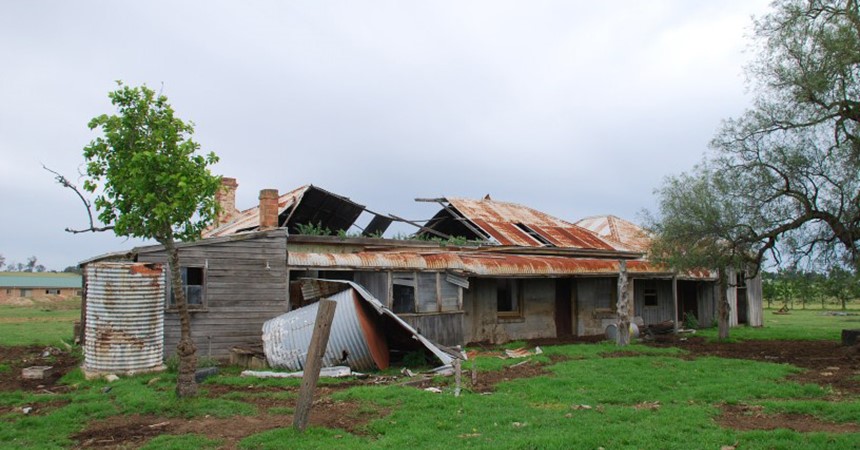Over the last few years, I have been researching the colonial history of the Hunter Valley for a PhD. Having grown up in the Hunter and having a long-standing interest in Australian history, I thought I had a fairly good idea of the Hunter Valley’s past. In hindsight, my understanding merely skimmed the surface of the place, and I had hardly considered the complexities, the hardships and the interwoven relationships that shaped its colonial history. As with so many other colonial regions, the Hunter was a place of violence, isolation, hardship, endurance, co-operation and survival for the Aboriginal population as well as the vast numbers of convicts who were sent there and the free-born settlers and emigrants who flocked in to take up land after 1820.
Although the research was focused primarily on the years after the closure of the penal station at Newcastle in 1820, you cannot hope to understand the history of the wider valley without a careful consideration of the Newcastle penal station. While Newcastle has been studied in more recent years by a small number of academics, in the wider, popular history about the colonial period, it has been curiously overlooked. This is even more pronounced if we are to include the wider Hunter.
Newcastle Harbour and the river were some of the first places visited outside Sydney by the British after the landings in 1788. In 1790 a party of five escaping convicts probably entered the harbour, or at least saw it, as they sailed a stolen boat up the coast. Four of the five were discovered living amongst Worimi people at Port Stephens in 1795. Escaping convicts precipitated the first official parties to come to the Hunter, who in turn reported coal seams in the coastal cliffs, abundant fish in the harbour and enormous cedar trees growing along the river banks.
It is often overlooked that Newcastle and the Hunter Valley were convict places. The penal settlement, which was permanently established in 1804 (after a failed attempt in 1801-02), meant thousands of convict men and women were sent to the area to work in the mines and cut the cedar. The cedar getters in particular were important for the longer term history, as it was these men who pushed out from Newcastle, chasing the timber farther and farther inland. Their camps along the Hunter, Williams and Paterson Rivers became the base points for a number of the towns that remain along these water ways. Morpeth, Maitland and Raymond Terrace all owe their existence to these convict camps.
The convicts were also the first to encounter the Aboriginal people of the valley. The men and women of the Awabakal and Worimi nations took the brunt of these first contacts. Inland, people of the Wonnarua nation were also soon confronted with the British. At first there was a sense of careful curiosity on both sides. Aboriginal people came and went from the settlement and continued to live all around the area. They were water people as much as of the land. As had been observed by the British in Sydney, Newcastle and Hunter people used the harbour and river as a hunting and fishing ground, moved easily in canoes around the waterways and along the coast and travelled as far up the river as the Singleton area in canoes, some big enough to take eight people.
The Hunter River is the keystone to all this, with the Williams, Paterson and Goulburn Rivers each acting to carve out the valley over millions of years. Their regular flood cycles, many of which were large events, laid down thick deposits of rich, alluvial soils across the region, which in turn supported fields of luxuriant grass that made the place so attractive to British settlers.
From 1820, when John Howe, led by his Aboriginal guide Myles, made his way overland to the Hunter from Windsor, British settlers poured into the area. The population went from around 1000 in 1820, most of whom lived in Newcastle, to 3200 in 1828, to over 9000 in 1836 spread all over the Valley. These numbers don’t seem much compared with today’s population, but these new settlers also took up land, with the granted land rising from 638 acres (258ha) in 1821 to 537,488 acres (217, 513ha) by 1828, not including the one million acres given to the Australian Agricultural Company around Port Stephens. With the number of sheep and cattle also exploding, tensions over land, access to the river and food resources between Aboriginal people and the British escalated. From 1826 to about 1829, violence flared across the middle valley. While some Europeans lost their lives, many more Aboriginal people were killed defending their country. It was a bloody and terrifying time for people on both sides of the conflict.
Aboriginal people survived these years and continued to live in and around the settlements throughout the colonial period. Many avoided the British settlers, while others came and went, maintaining a traditional connection to country while also working on the farms and estates that now occupied the Hunter. Almost every major estate in the Valley had Aboriginal workers at some point. Colonial letters and diaries are full of accounts of Aboriginal people helping at harvest, planting crops, clearing land, minding cattle and sheep, building bark huts and shelters for farmers, ferrying people across the rivers and at Port Stephens, hunting and fishing for trade. There is even some evidence of Aboriginal people helping to plant grapevines in the first vineyards. Their mastery of canoes also meant that the river remained a central focus. At least once in a large flood in 1826, stranded British settlers watched in amazement as a canoe went past their house, crossing the flooded fields.
The colonial history of the Hunter Valley is too much for a short piece such as this. It is one of the most interesting regions in early Australia, full of all the dramas, triumphs and tragedies for which other places are recognised. It was not always a nice place to be, but needless to say it set the foundations for the Hunter as it is today.























































































